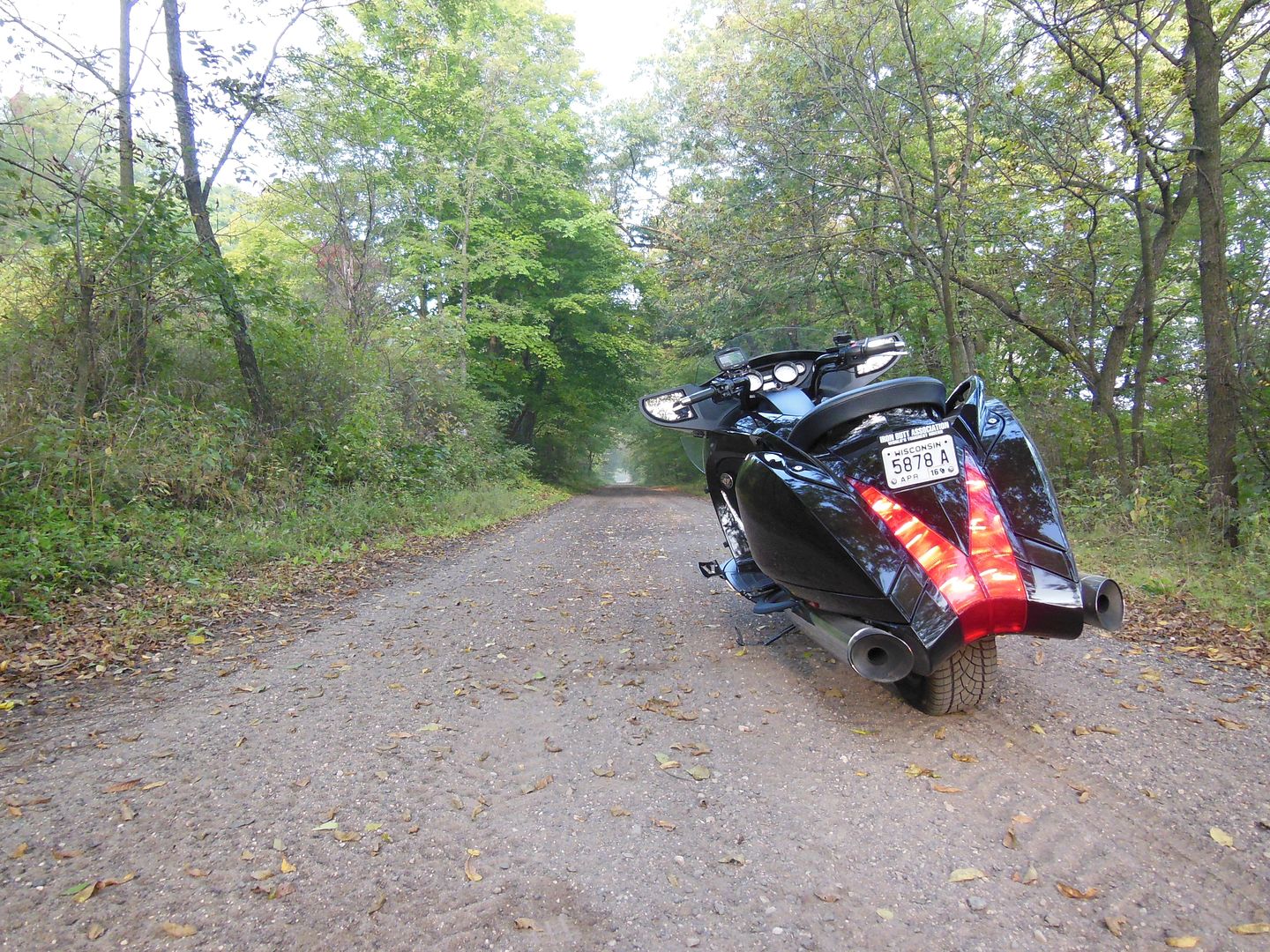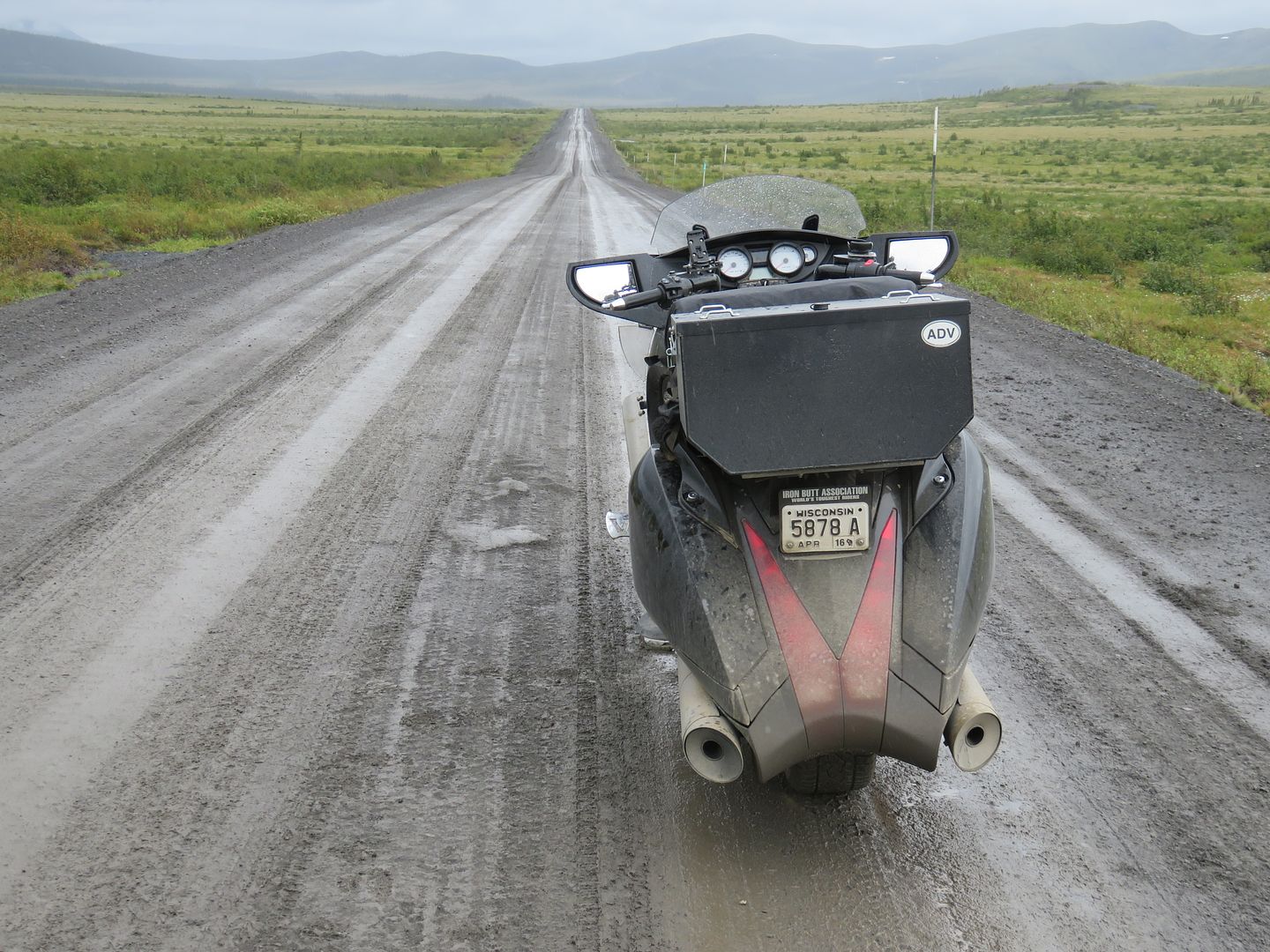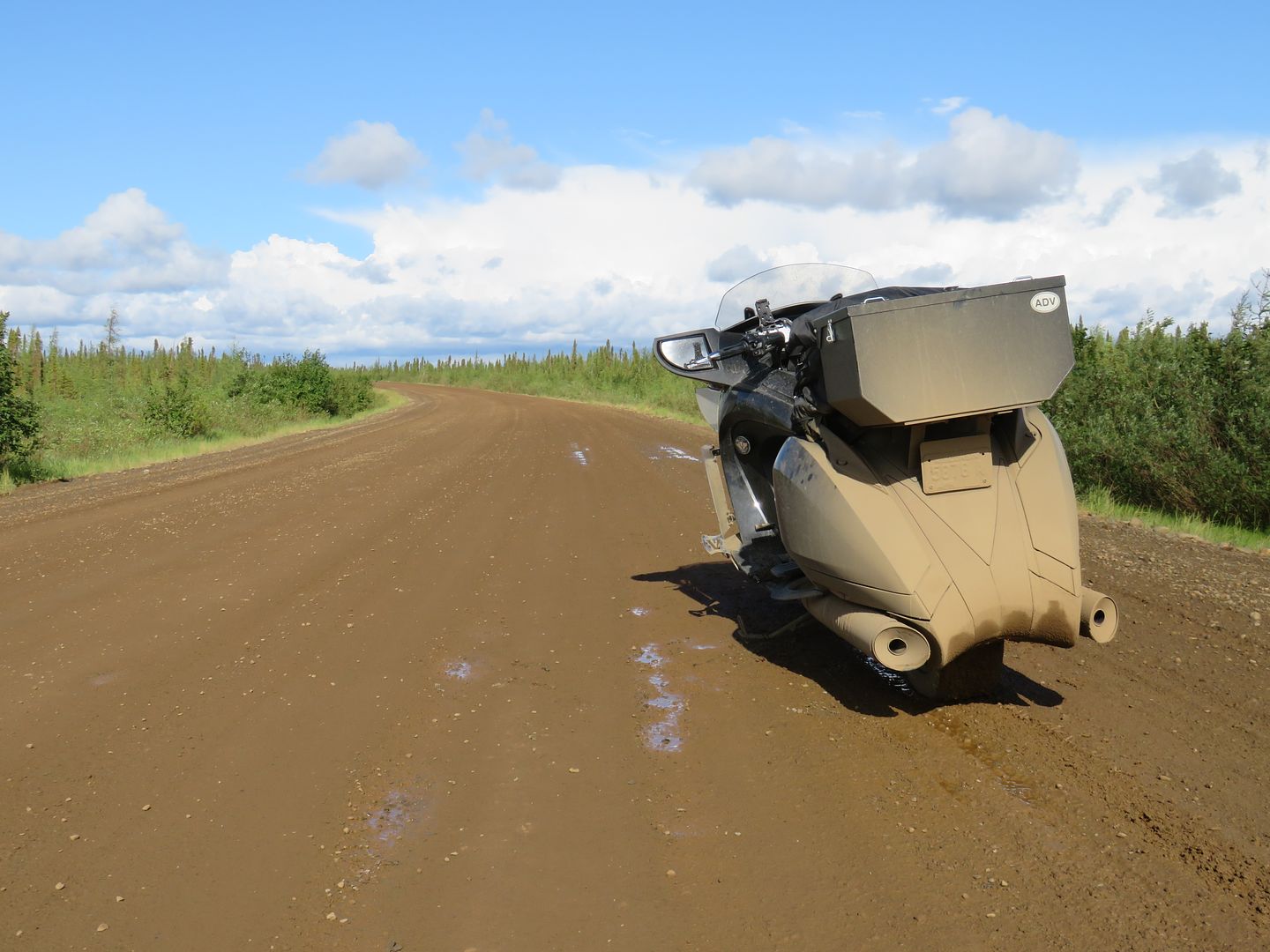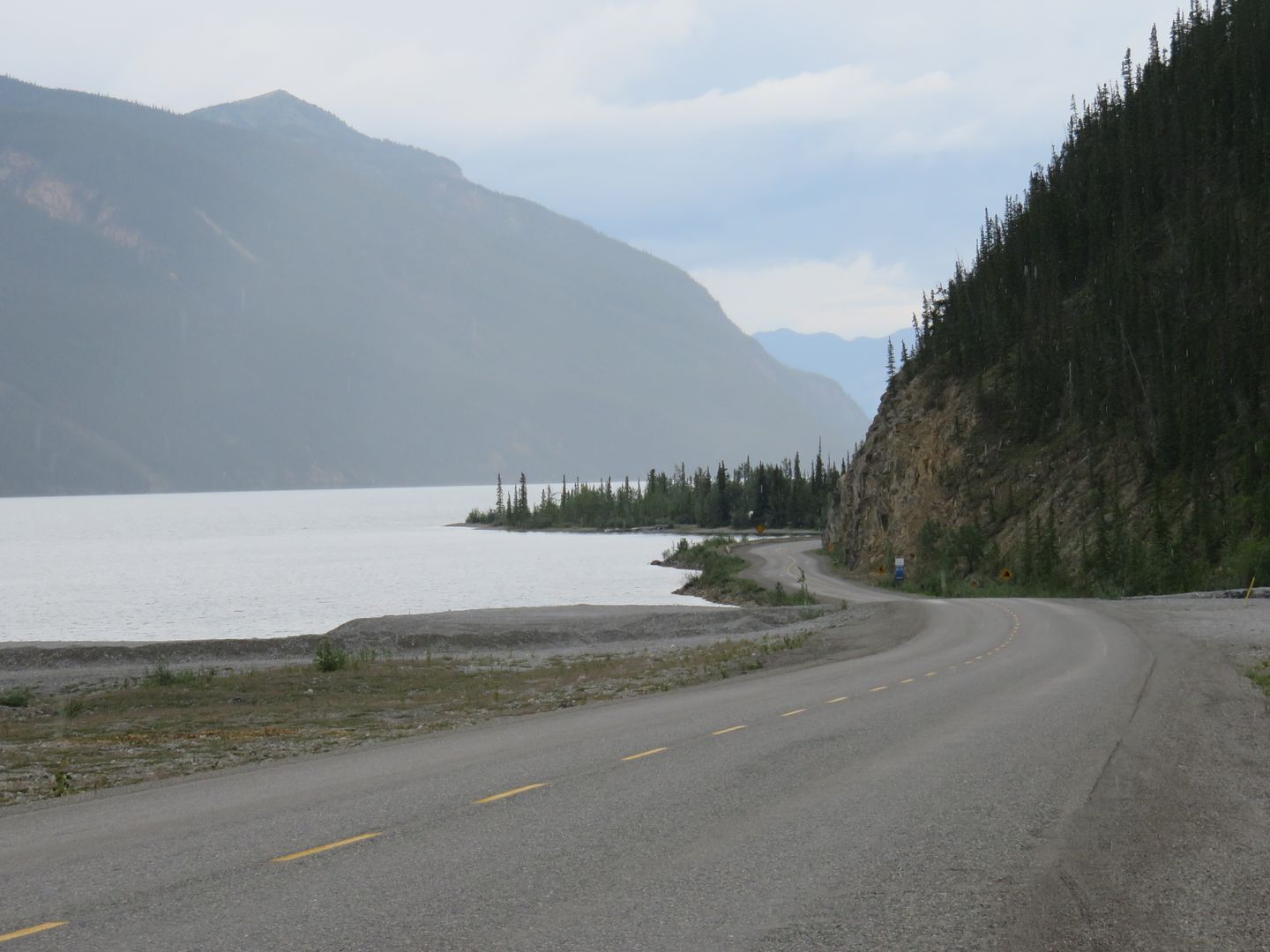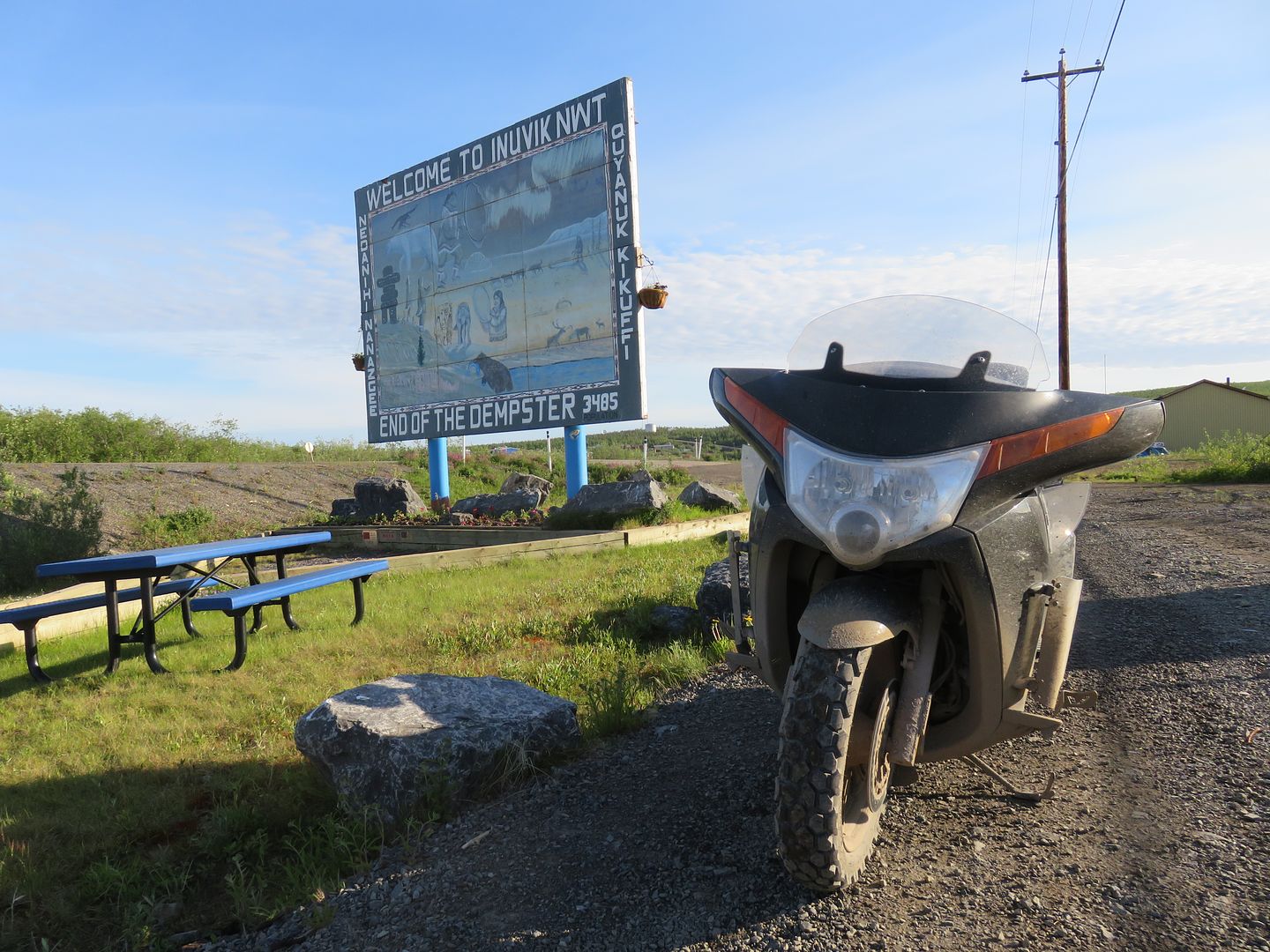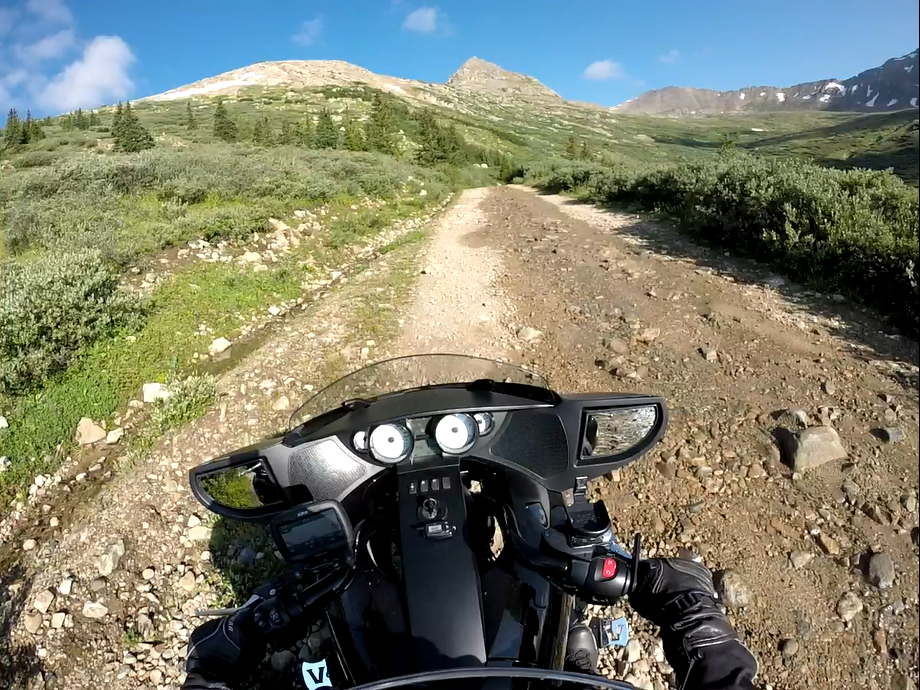It's a good article written by an Engineer and targeted to a large diverse crowd with an overabundance of variables in the hardware, both in rides, rims, and tire choices. However it's interesting to note in the referenced article that the illustration given of the motorcycle tire bead profile vs. the automotive tire bead profile fitted in the motorcycle rim, does not take into consideration the soft flexible nature of rubber, and the angle of the bead due to the range of rim widths for that given tire.
The illustration below is from that article.
Note that the black filled in profile is the tire. The upper picture shows a motorcycle bead having an exact fit into the rim as designed. The lower picture shows an automotive tire riding on the bead hump of the rim keeping it from nesting properly in the seat area. This cookie cutter illustration fails to show the deflection that takes place at that corner due to rubber's soft nature. It also fails to show, at least in the case of our application, the angle of the sidewall to rim caused by the width of the tire. The 205/50 size tires we run on the FJR is rated for a 5 1/2 to 7 1/2 inch rim. Our rims are at the minimum width for these tires which causes the tire to squeeze narrower to fit within the rim. This helps force the outer corner of the tire bead to nestle into the corner radius of the rim, and the side profile of the bead to ride further up the side of the bead seat area.
I have run 4 automotive tires now on my 3 FJRs, and I mounted and balanced all of them myself. My method is to use a sheet of plywood on the garage floor, and use tire spoons with rim protectors. I cannot use my NoMar tire machine, because of the large rim clamps which do not accommodate the extra wide tire profile of the automotive tire; remember, we have to modify the brake strut to gain the necessary clearance to run this set up.
During the times my automotive tires were mounted, I've occasionally needed to remove them to replace my TPMS sensor mounted inside the tire and /or swapping the tire over to the new bike's rim. As always, I scrub the rim seat area clean of all residue with a kitchen scouring pad and soap before mounting/remounting the tire. I see first hand the contact pattern the tire has with the rim. The tight radius in the outer rim bead seat area does have evidence of a very slight gap, as the tire bead radius is indeed larger, and the wire within the bead isn't tight enough to force all of the rubber to fill this area. However, it is tight enough to force the bead to sit in the floor of the bead seat proper. There is also a very slight gap at the base of the hump where the rubber is forced to bridge this tight radius. The inner corner of the tire bead is forced up the center of this hump, which in my mind, causes a better chance of an air tight fit. My tires show no more air loss than any of the motorcycle tires I ran previous to this 'Car Tire Experiment' we are taking part of.
Please note that the motorcycle tires I have run on my first FJR AE (pictured in my avatar above) were the Avon Storm, the Michelin PR2, The Dunlop RoadSmart, and the OEM Metzler; I might have even run a Pirelli, off hand I don't remember that far back. Note that these are all premium tires, which command a premium price. All told these tires took me to about 75,000 miles on that bike. The automotive tires I have run since are the Bridgestone 019 Grid, 2 Michelin Pilot Exaltos, and the General G-Max AS-03. All 3 of the automotive tires are the 205/50 specification and are Steel Belted All Season Radials of the Sport Tire variety - not RunFlat tires. I have since clocked over 120,000 miles on these automotive tires. When I was running the motorcycle tires I was consistently getting 4 - 5,000 miles on them before they were worn out in the center - I must have a heavy throttle hand. Every 7 weeks I was looking to replace a tire, something had to change. These automotive tires are giving me approx. 36,000 miles each, and I am well pleased!
When this experiment started way back in 2008, it was with the motivation for making ownership of this FJR platform a bit more affordable. Fortunately for all of us the variables were complementary and gave favorable results. That is not always guaranteed, hence Engineer Tom Austin's suspicions and unease with the concept. I believe if he looks deeper into the data that these various user forums offer - the empirical evidence gained with experience, he would tend to feel a bit more at ease with the concept - at least where it has been proven successful.
In my humble opinion,
as far as the fitment of these tires on the 5 1/2 width rim found on the back of our current Yamaha FJR platform, they work exceptionally well. In my own personal experience of ownership, the altered handling characteristics are well within the safe operational range for the typical rider. Granted, the bike is capable of sustained elevated speeds in the 130 - 140 mph range, but who does that on a regular basis - without getting multiple performance awards? Also note that these tires are known to affect the handling adversely at these speeds - it gets a bit squirrelly, which seems to put a cap on the speeds run. If you want to run these speeds, by all means mount a properly speed rated motorcycle tire to this bike and enjoy!
As always,
Your
Mileage
May
Vary
Brodie

